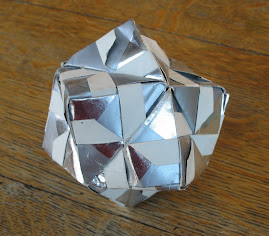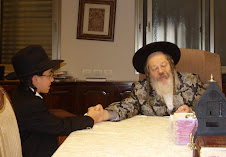
Wednesday, April 8, 2009
Sunday, March 1, 2009
Sunday, July 13, 2008
"Drunken Chicken" - Why are these chickens dancing?

I love making BBQ chicken in the summer months; it's such an easy meal. I especially love putting up chickens on a friday afternoon. The special feature of "drunken chicken" is that the beer vapors are infused into the chicken while cooking. The chickens are still very juicy and tender when we eat them for lunch, room temperature, on Shabbes afternoon.
1. Put up the BBQ.
I have a plain old charcoal BBQ. Your BBQ might not be tall enough to hold the chickens standing up. After the fire has died down and the briquets are white and hot, use a utensil to make a clearing among the coals in the center of the BBQ. You can place the chickens directly on the floor of the BBQ in the clearing, without the rack.
2. Clean and season the chickens.
I like to make a pocket between the chicken and the skin, and rub garlic into the pocket. (Used jarred crushed fresh garlic). Dear husband can't take food too spicy, so I rub the skin of the chicken with paprika and black pepper. But you can also so some of the great BBQ rubs available.
3. Sit the chicken on the beer car.
Dont try bottles of beer and dont forget to open the can - otherwise you'd made a little Molotov cocktail. When you sit the chicken on the can, try to leave at least a couple of inches of the can as an exposed pedestal - this keeps the chickens from getting singed feet!
4. Put the chickens in the Barbee!
If you are making 2 or more chickens - you can arrange them to touch each other - this gives them a little more stability. As long as the BBQ is stable - you shouldnt have problems keeping the chickens upright.
5. Cook for 2 hours.
I check up on them from time to time - but that's it. Nothing more left to do but eat them!!
Friday, May 2, 2008
Shlissel Shabbes

What's that key doing in the challah? The first Shabbes after Passover is "Shlissel (Key) Shabbes". It is especially meritorious to bake your own challah right after Passover, and putting a key in it "directs" the blessing to your home.
The art of challah is in the timing. You have to adjust your schedule around the challah, not expect the reverse to occur. My worst results have been when I've been impatient with the challah and try to rush the process. I find that the best time to make my challah is to start on Sunday mornings. If I start on a weeknight, I resign myself to setting alarms at all hours during the night to check up on things.
Here's my water challah recipe. This recipe gives you a low fat, light fluffy challah, which my family prefers over the more cake-like challahs. This makes six challahs.
Three packages dry yeast
1/2 cup sugar
3 egg whites
1 tablespoon salt
1/4 cup Orange Juice - salt inhibits yeast whereas vitamin C really boosts it. I find that add the orange juice can yield a fluffier challah.
I quart seltzer substituting seltzer for water also gives you a fluffier challah. Make sure the seltzer is at room temperature, not out of the fridge.
Warm water
5 pounds flour - high-gluten bread flour is preferable. You might also want to be gluten in a health food store to add to your challah - it improves the stretchy texture.
1. Proof the yeast
Put the dry yeast in the bottom of a very large bowl. Add 1/4 cup sugar, and one cup of lukewarm water. Leave the yeast alone for 30 minutes. If you find the yeast has bubbled up, it's alive and active.
2. Make the dough
Add the flour, remainding sugar, salt, slowly, 1 or 2 cups at a time alternating with the liquid ingredients (oil, orange juice. seltzer, egg whites, stirring with a spatula all the while. Once you can stir no more, lay down that spatula and use your hands. This is the best part. I love kneading dough. It's what bread making is all about. For this first knead, keep mushing the dough until its combined and workable. You need to add 6 cups of water in total, but here is the place where you adjust the water until the dough is workable.
3. First rise
Cover the bowl with a warm wet cloth and go away for at least 30 minutes.
4. Take challah, second knead, second rise
The dough should have risen up nicely in the bowl.
One of our three unique mitzvahs, as Jewish women, is to separate challah. This is the correct time in the process to give tzadakah, say the tfilah, and take the challah. I used to wrap the challah in foil and burn it in the oven, but I learned it is better to throw it out, right after taking it.
Go through the second knead. I like to cut the dough into 6 balls and knead each one separately. Grease your hands before kneading. Kneading is a back and form rhythmic motion that aligns all the gluten molecules in your dough and gives you that beautiful "bready" texture.
As I am working the dough, I'm thinking about my family eating it and I'm thinking, "L'kovod Shabbes Kodesh".
Put the six balls back in the bowl, cover with wet warm cloth, and go away again.
5. Shape challahs, last rise, bake
Separate into 6 equal six balls again. Take each ball, and separate again into three equal balls for braiding. Roll out a small ball with a rolling pin, rolling it into a rectangle. Then going perpendicular, (in other words, starting with the long side) roll into a snake. Braid three snakes together and place in a long aluminum disposible trays. Make all six challahs.
Cover the six trays with two warm wet clothes. Now this is the really hard part - go away. Go away and do something until the bread has risen above the level of the tray. Sometimes this will take hours, sometimes all day! You just have to be patient and let the yeast take its course.
When the challahs have risen, brush with a mixture of one egg, a little water, a little sugar. Bake at 350 degrees. After 30 minutes, switch the positions of the breads from lower tray to upper tray and visa versa. Then finish baking another 25-30 minutes.
Tuesday, March 25, 2008
Saturday, March 22, 2008
Friday, March 21, 2008
Pomegranate Chicken
This recipe is for one chicken, either quartered or in eights. Multiply it as needed.
one chicken (quarters or eighths)
1 bottle pomegranate syrup
1 bottle pomegranate juice
1 cup crushed garlic
1 tablespoon black pepper
1/4 cup fresh mint.
Mix all the liquids and spices in a bowl. Place all the ingredients in a Ziploc storage bag and press out extra air. I let it marinate in the fridge for 3 or 4 days, turning daily. (Susie says up to 2 days, I've left it up to 4 with great results).
Heat olive oil in a wok. Place chicken in wok skin side down. The skin will stick to the bottom of the wok when brown, so turn over once carefully. When the second side is brown, remove from wok and place in an aluminum roasting pan. When all the chicken pieces have been browned and placed in the pan, add in the pomegrate marinade from the ZIploc bags. Pour some new concentrate on top of the chicken to create a glaze. Bake at 350 for an hour.
Serve garnished with fresh pomegranate seeds, fresh mint, atop basmati rice. Listen to your family rave :)






































